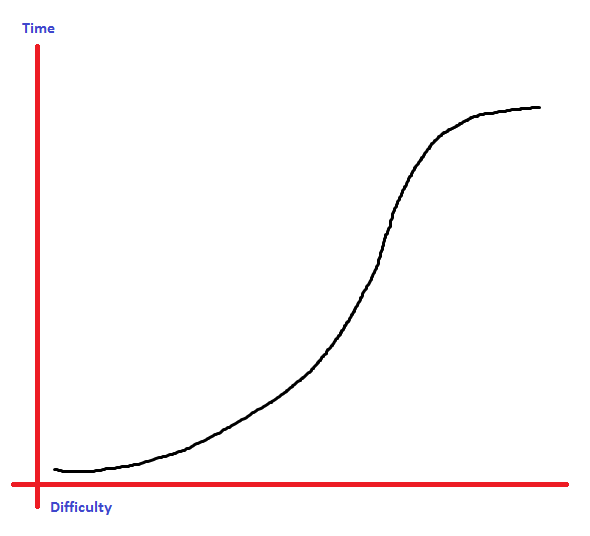Doing Difficulty Right: Fractal Curves
Create the most satisfying challenge level in your game by creating well tuned curves and nesting them withing one-another.

The following article contains my Extended Thoughts on "Difficulty" discussed in the Gameology podcast with my co-host Mathew Falvai. You can listen to the Podcast via RSS, on iTunes, Google Play Music, or watch the episode in video format:
Doing Difficulty Right Part 1: Keeping Players Informed
Doing Difficulty Right Part 2: Consumable Items
Doing Difficulty Right Part 3: Modes and Multipliers
As a player progresses through a game, it is reasonable to assume that will naturally get better at it. They will learn to master the controls and gain a more thorough understanding of the mechanics. As such, the difficulty of a game should naturally rise over time to provide a level of challenge to the player that feels "just right". As I see it, an ideal curve can be broken into three parts:
Smooth Start
The beginning of the curve should be the flattest as you take the time to introduce the player to your game, letting them get a feel for the controls before giving them any real challenge.
Upward Slope
As a curve begins to steepen, you must pay close attention to each interval of the slope, making sure that there are no "walls" where the difficulty rises too suddenly. Let the slope build, but keep it a smooth curve; don't let it build to an unpleasant spike.
Flattened Peak
When a player has attained a new threshold of competence, they should be allowed some time to enjoy that feeling of power before you increase the slope of the difficulty to provide them with a fresh level of challenge. This creates the moment of "release" that follows the intensity of a "tense" moment as the Slope reaches its steepest point. You may even consider having the difficulty dip down a little at this point.

Curves withing curves
As the difficulty curve's overall shape trends upward over time it should have smaller subsets of peaks and valleys. Towards the end of an experience, you can start to increase how steep the Slope of the curve is, scaling the challenge up at a faster pace than earlier in the game.

Curves within curves within curves
But why stop there? As important as it is to have an overall curve of your game in mind, you can plot out the difficulty curve of your game down to the moment (The execution of a complex attack can have its own curve mapped to it!). It seems like an awful lot of planning and tuning, but if you can map out a satisfying curve for your game, it will ensure that the order of things shakes out nicely and your game will feel better as a result.
Want your game design questions answered? Submit a question or comment to the Gameology podcast on BluishGreenProductions.com, and check out the Extended Thoughts articles while you're there. You can find me on Twitter @BluishGreenPro
Read more about:
BlogsAbout the Author(s)
You May Also Like














